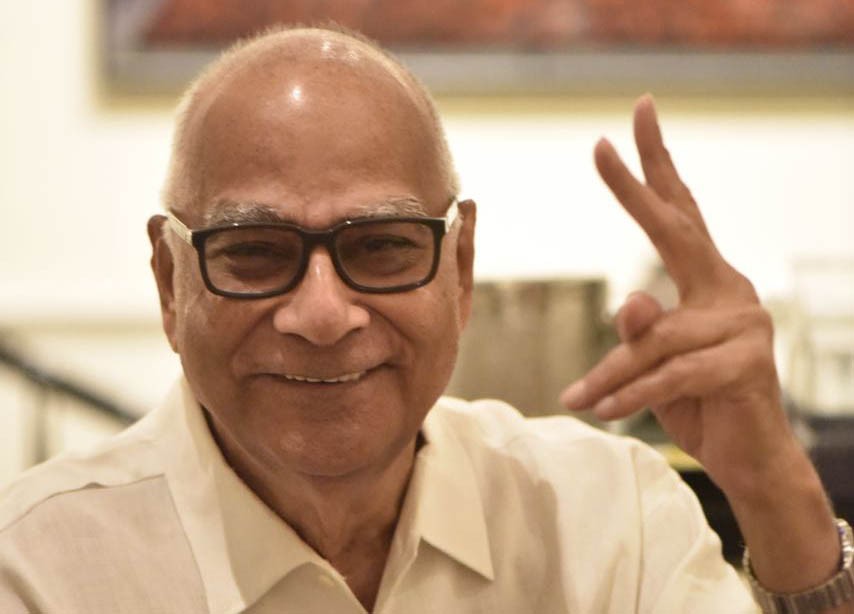
Habib Fida Ali’s design philosophy throbs in the architectural marvels that he created during his lifetime

When my architect husband, Mukhtar Husain was documenting houses for his book 100 +1 Pakistani Architects and Their Own Houses (FNMH Architecture 2006), he decided to make an exception and include Habib Fida Ali’s distinguished house, even though it was not designed by him. The restoration and various interventions by Fida Ali (though visually inconspicuous and minimal) merited its inclusion, and the book is indeed richer for it. Husain has quoted the master architect, "I am attracted to understatement. I prefer a limited palette of materials to create an uncluttered, no-nonsense effect". "This," says Husain, "aptly sums-up his [Ali’s] attitude and distinct architectural style."
Fida Ali’s home reflected his dedication to preserve heritage and his deference for local material, and the art collection that adorned it truly revealed his aesthetics and passion for history. His collection of paintings, sculpture, antiques and artefacts -- picked from all over the world -- was placed against the magnificent backdrop of the house, with sun-light filtering through the un-curtained windows by day, and expert interior lighting by night.
In the spring of 2008 I visited the house once again, together with my NuktaArt magazine colleagues as we wanted to include his art collection in the magazine’s summer issue. It was always a pleasure to enter the wooden gate and see the green lattice work in the front and find the inside quiet and calm, with gravel paths and lush foliage enveloping one in their splendour and delicate scent.
Habib Fida Ali recalled, in that meeting, his childhood in Karachi; how seriously his father collected stamps and how his mother would help and spend time in wetting the stamps, and laying them out to dry. His paternal uncle collected coins. He admitted to these influences on his own meticulous approach to collecting art. Apart from the paintings and sculptures, he also had a large collection of silver.
A spectacular 12 ft x 12 ft pichvai (temple curtain hung behind the deity),on the dining room wall was one of his most treasured pieces. Dating back a hundred-and-fifty years, the pichvai surely takes your breath away. It is from Nathdwara in Rajasthan, a town famous for renderings of Krishna. Fida Ali had purchased it from a famous collector and specialist in the UK.
He attended St. Patrick’s School in Karachi but was unhappy at the school and started to play truant to watch movies in cinema houses instead. Films remained a passion throughout his life, and influenced his aesthetic sense. In 1952, his family moved him to Lahore, to Aitchison College. He thrived there. He was amongst artists and his creativity flourished. He directed a school tableau The Dream of Anarkali, for which he went to the composer Naushad for the music! His art teacher, painter Moyene Najmi had a major role in instilling and furthering his aesthetics, and suggested that he should study architecture.
Fida Ali went on to The AA -- the Architectural Association School of Architecture in London. Founded in 1847, the AA is the oldest architectural school in Britain and Fida Ali was the first Pakistani at the school, followed by Kamil Khan Mumtaz and Javed Najam. He duly qualified from there in 1963 as an Associate of the Royal Institute of British Architects (ARIBA), travelled extensively and returned to Pakistan in 1964. He joined the American architect William Perry, who was then working in the country and started his own practice, Habib Fida Ali Architects in Karachi in 1965.
Habib Fida Ali has left behind a legacy that few can match. The range of his work is enormous -- from private houses to public buildings to historic preservation. But it is not the numbers of his buildings or the residences of the well-heeled, nor the high profile corporate and institutional clients that matter. What matters is his masterful compositions; his simple and clear lines, the use of fair-face concrete and clear geometric design that makes his architecture so distinct and appealing. He won several awards and served as a jury member for the prestigious Aga Khan Award for Architecture.
He designed the Shell House, his first major commercial project, which is situated not too far from his own home. He planned the orthogonal Cavish House on Shahrah-e-Faisal, Sui Northern Gas Company -- the first fair-face concrete building in Lahore, and Sui Southern in Karachi, National Bank of Pakistan and United Bank Limited in Quetta, Commercial Union, British Deputy High Commission (visa office), New Jubilee Insurance, Islamic Chamber of Commerce, Siemens and Eastern Federal Union in Karachi, Karachi Club Annexe at the creek front, The Forum shopping mall in Clifton, Haque Academy, Pakistan School of Fashion Design, Lahore University of Management Sciences and many other fine buildings.
A major contribution of the architect was the restoration of the Mohatta Palace Museum in Karachi, which was the private residence of Seth Shivratan Mohatta and dates from the 1930s. It also served as the last residence of the Quaid’s sister Mohtarma Fatima Jinnah. Habib Fida Ali designed exhibition spaces for the Takhti Show that was held at the Frere Hall to commemorate artist ZahoorulAkhlaque, Pakistan’s leading artist, best known for pioneering the contemporary miniature movement. He also designed the Faiz Art Prize, organised by NuktaArt to celebrate the legendary poet’s 100th birthday.
The design philosophy of Habib Fida Ali Associates stands on three principles: timelessness, simplicity and minimalism, with a view that architecture which transcends fashion can withstand the test of time. Which, indeed, it does.
Architect Hasan-ud-Din Khan’s splendid book, The Architecture of Habib Fida Ali has documented a large body of Ali’s work.
Habib Fida Ali passed away on Jan 7, 2017.